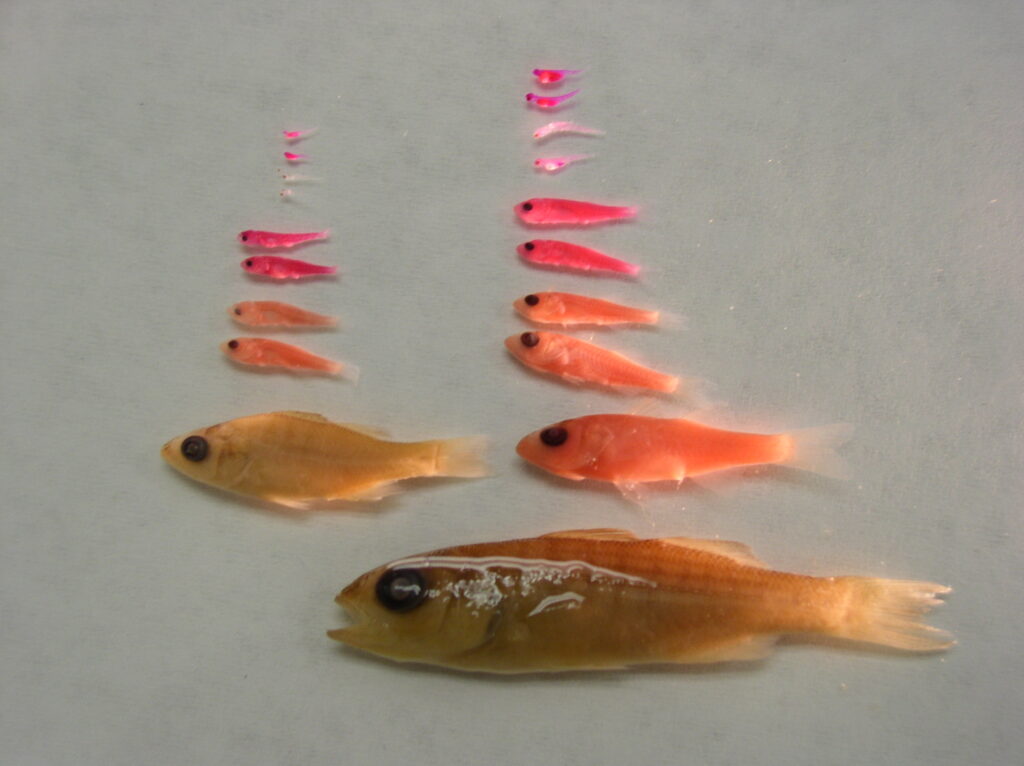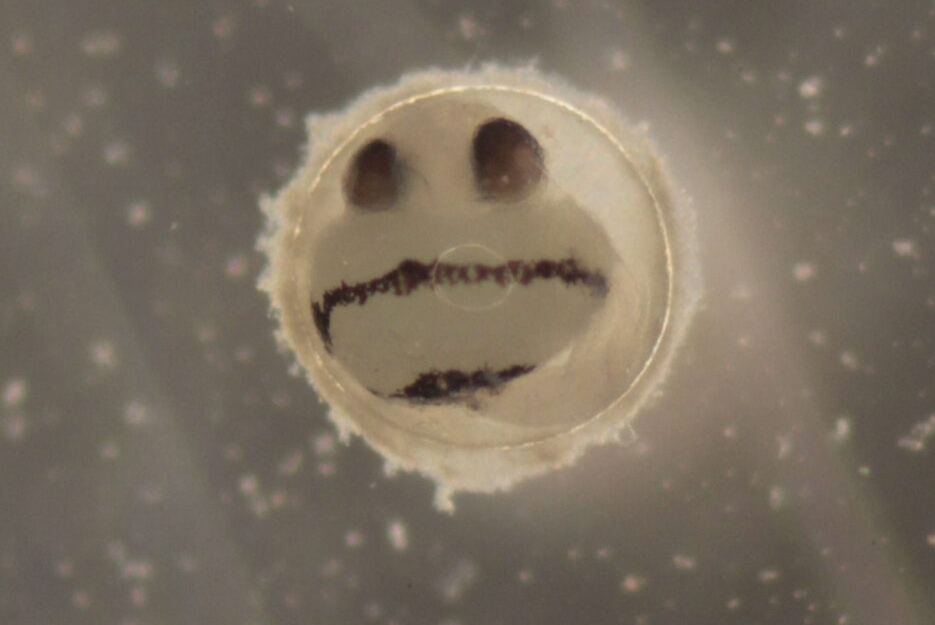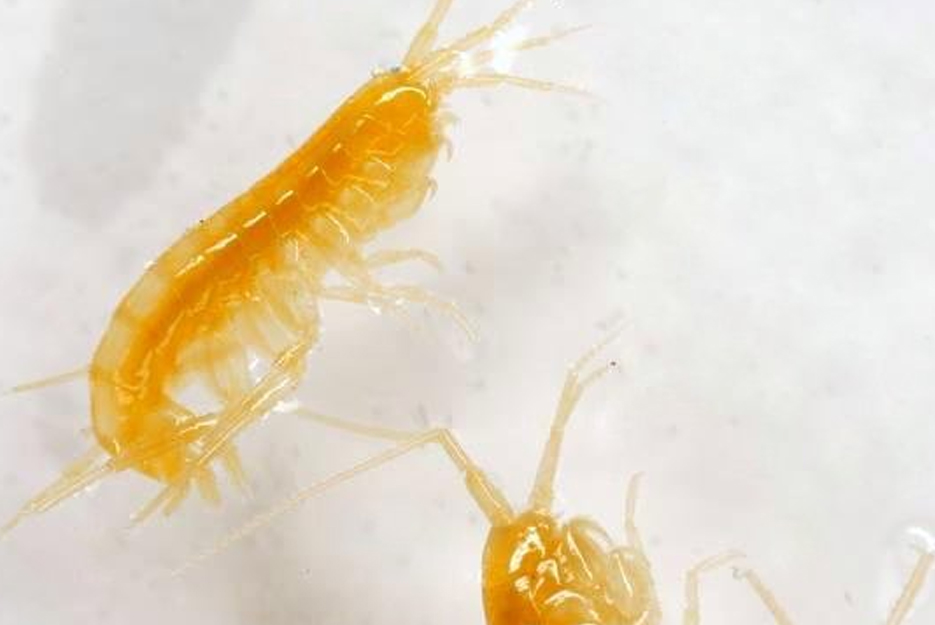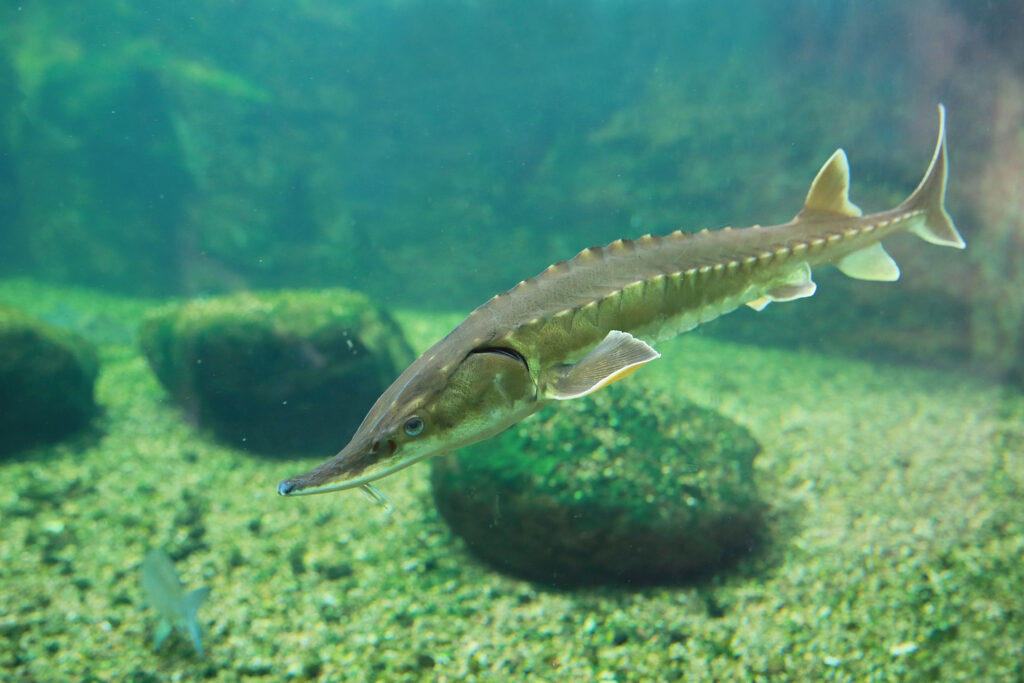You don’t have to be a scientist to identify a fish. Your average experienced fisherman can ID a fish just as well as your average experienced marine biologist, if not better. It’s an intuition and knowledge that comes from a lifelong pastime and passion. But that’s just for adult fish. Identifying fish larvae (and fish eggs) is a whole different ballgame. We’re not talking about the fry and juvenile that we just toss back into the water. We’re talking about larvae about 4 millimeters in length, and eggs 1 millimeter in diameter. We call these things “ichthyoplankton,” because they are so small and undeveloped that most rely on ocean currents to move, much like other forms of plankton.
Identifying fish larvae is completely different from identifying adult fish—you might as well be learning a whole new set of species. Fish are discovered and named as adults, not larvae. This can make things confusing for new taxonomists. Bluefish larvae are not blue. Striped Bass larvae are not striped. Flatfish larvae are not flat (in fact, some of them are quite long and skinny). Adult fish that you would never confuse with one another, like the American Sand Lance and the Rock Gunnel, can be nearly identical as larvae.
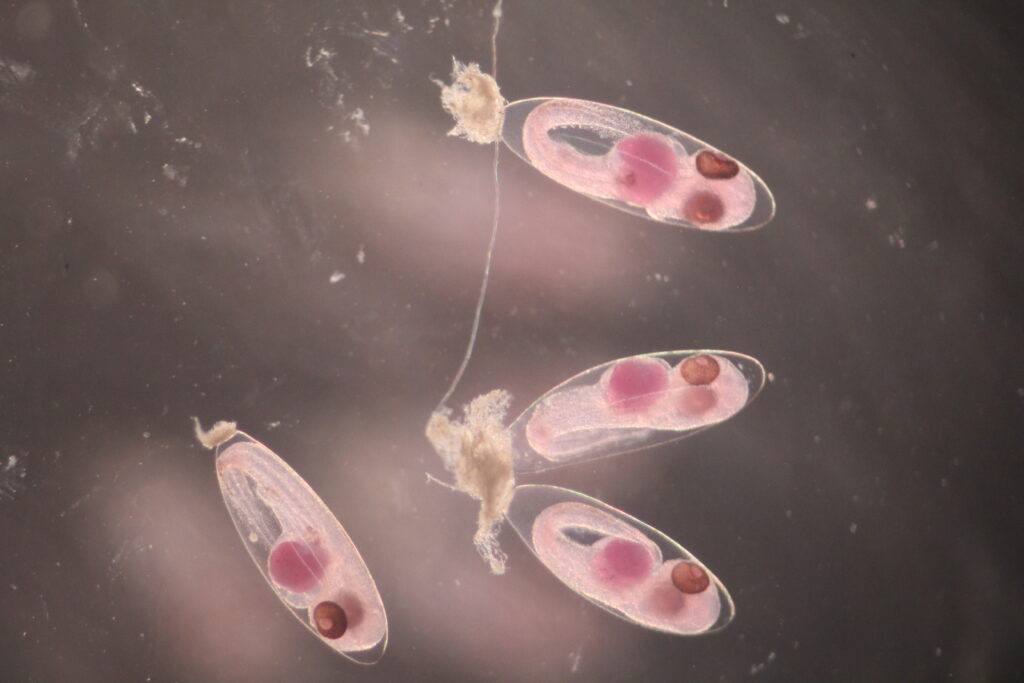
Another thing is that larvae can change fast. Some changes are gradual and logical. For instance, flounder larvae get flatter over time and one eye will gradually move over to the other side. But then there are larvae that make no sense. One famous example is the American Eel, which is one of the few animals that actually shrinks as it develops (for one stage of the life cycle, at least). There are less famous examples, which I won’t say for the sake of industry secrets, but just know that there are larvae who can completely change their appearance in the span of just 48 hours.
Still, there are ways to ID every larva you see. You just need to break everything down into categories. Knowing when and where your larvae was from is a good start. In New England waters, where I usually work, that will normally narrow down the suspect list to a few dozen species. From there, you can further narrow things down just by comparing body shapes, gut morphology, pigment, and meristic counts.
At that point, in a sample of about 150 larvae, I’ll have everything identified save for a few wildcards. If I’m lucky, these wildcard larvae could be a novel species I’ve never encountered. In which case, I get to do research and pretend I’m a detective—the best part of the job. If I’m unlucky, the larvae are only wildcards because they are so beat up that they are almost unidentifiable. Sometimes, I might only have a spinal segment, and I’ll be zooming in my microscope to see if there is the slightest hint of a speck by where the dorsal fin probably was; but that speck may be what separates an endangered species from an invasive one, so you have to put in the work.
But why do this? We all know why fish larvae are important (they turn into adult fish), but why does it matter what species they are? Why is it important to know that there were 60 Atlantic Cod larvae, but only 12 Haddock larvae in a sample? The answer depends on the project.
Some clients want to ensure that their activities are having minimal ill effect on the local environment, and so they are hoping that we find that the area studied has a similar biodiversity to nearby control groups. Other clients are more interested in the health of specific animal populations, mainly the economically important ones. Atlantic Cod and river herring are vitally important to the local fishing industry, and so clients have vested interests in monitoring their spawning numbers.
And there are also the fish at the bottom of the food chain, like the American Sand Lance. There’s not much money to be made in catching these six-inch eel-like fish on the ocean floor, but they are of vital importance to the animals who hunt them, like the aforementioned Atlantic Cod and Haddock, as well as many flounders, seals, and whales. So, while you may not see them, or eat them, their nutrients are making their way to the Atlantic Cod you eat and the whales you watch. And so, we identify them.
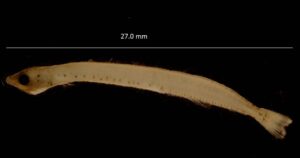
When we know what type of larvae we have, we know where they’ll go, what they’ll eat, and who they’ll feed. Some of these species are “indicator species,” so-called because they often indicate the health of the ecosystem. For scientists, they act as the proverbial “canary in the coal mine” to indicate problems that might not be obvious at first glance. For example, the Brook Trout, a popular freshwater fish here in New England, needs clean, oxygen-rich water to thrive, and is particularly sensitive to changes in acid levels. A drop in Brook Trout larvae may be an early indication of a problem with the local environment.
So that’s all I’m allowed to say about fish ID. If I told you anymore, you’d likely end up sleeping with the fishes.
